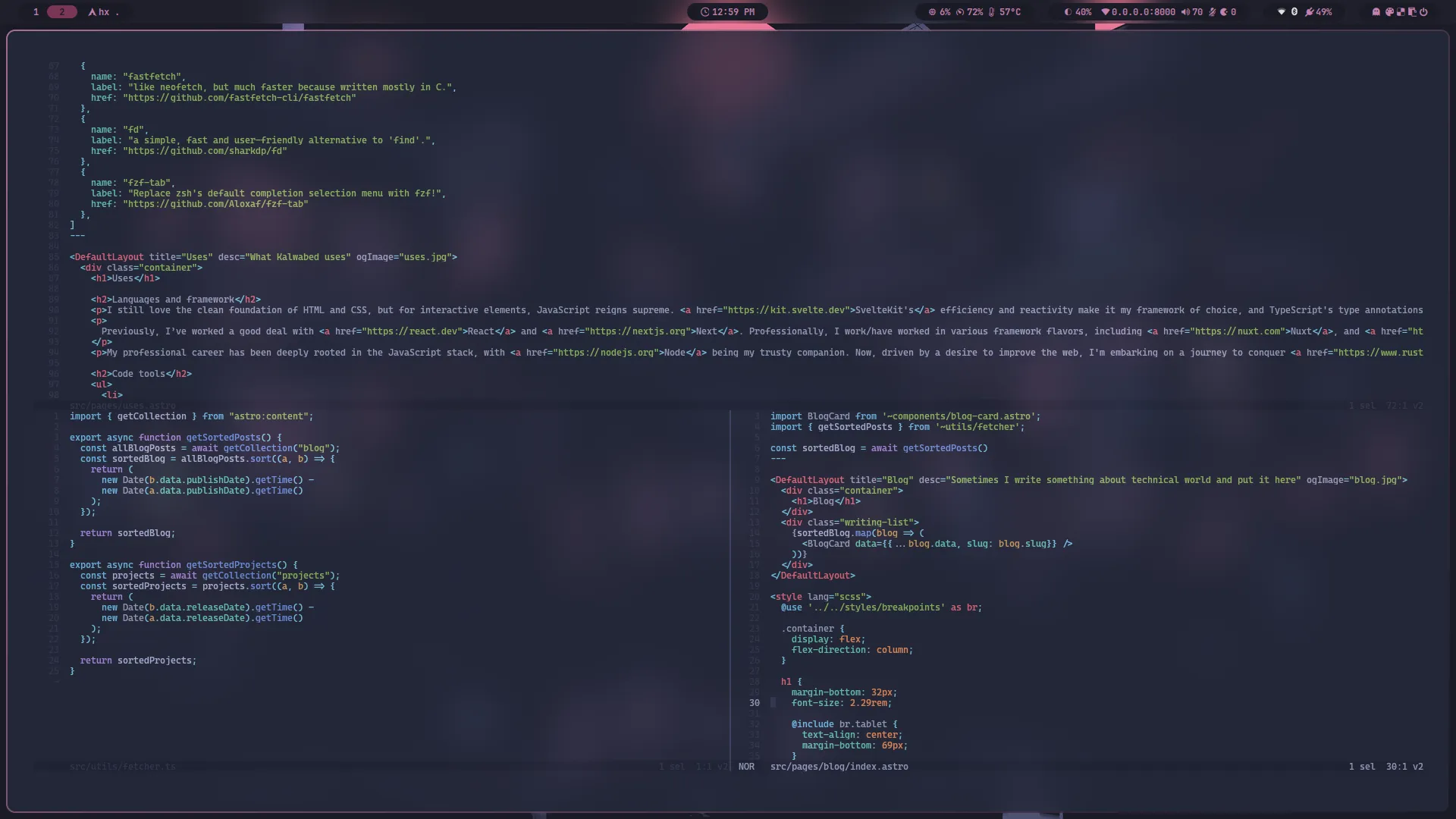Kalwabed Rizki, Feb 01, 2024 — 3 min read
Embracing the Rust ecosystem
Recently, about a year ago, I started looking at Rust as the next programming language I would learn. I won’t deny that I had learned Golang before but had to stop halfway through because I didn’t have the motivation to learn it at the time.
Biome
Now I feel confident that Rust is my next programming language because I see that the current web ecosystem - or rather the JavaScript ecosystem - is starting to get a lot of adaptations from the Rust ecosystem. Some tools written in Rust have also been adapted in production, such as Biome, which has become a formatting and linting tool, replacing Prettier and Eslint.
As of this writing, Biome still does not support some of the languages I use every day, such as Svelte, Vue, and Astro.
Seeing the development, features, and speed Biome offers, who knows, when Biome supports these languages, it might become my default tool for formatting and linting.
Linux
We’ve heard in the last 2 years that Linux has started to migrate some parts from C to Rust.
In an email conversation, Linux’s creator Linus Torvalds, told me, “Unless something odd happens, it [Rust] will make it into 6.1.” -ZDNet
Knowing this, I became even more curious to see if the implementation of Rust was widespread enough in the Linux ecosystem itself, and I found that there are now quite a few tools written in Rust, and some of them I now use as daily drivers on my machine, such as zoxide, helix, and fnm (see the usage page for more).
My curiosity to learn systems programming had been there since I had been using Linux for a long time, and it got stronger when I found out that there was a language like Rust that could be used to get into systems programming. Coming from the world of web development, I certainly felt challenged by it, and who knows, I could become a systems programmer as well.
Helix

Of all the tools written in Rust that I use on a daily basis, Helix is, in my opinion, the single most powerful factor that made me love Linux, open source, Rust, and systems programming in general.
I went from using GUI editors, ranging from Sublime, and Brackets, to Visual Studio Code as a tool for learning and working, to now having to deal with a “text editor” that is almost completely different from what I have used before.
With the determination and intention to learn Helix, I am finally able to fully transition from VSCODE to Helix. Thank God. It took me a few weeks to really let go of all the habits in VSCODE so that I could get used to it in Helix. Maybe I will write an article in the future about how I was able to fully switch to Helix, but for now, I am using Helix as a daily driver for my learning and working activities, and I feel very productive with it.
Conclusion
Rust seems to be inseparable from my daily life as a web developer and Linux user. The fact that Rust is the most admired programming language in 2023 proves that Rust will be around for a long time, so the opportunity to pursue it is very open, and there are still many opportunities.